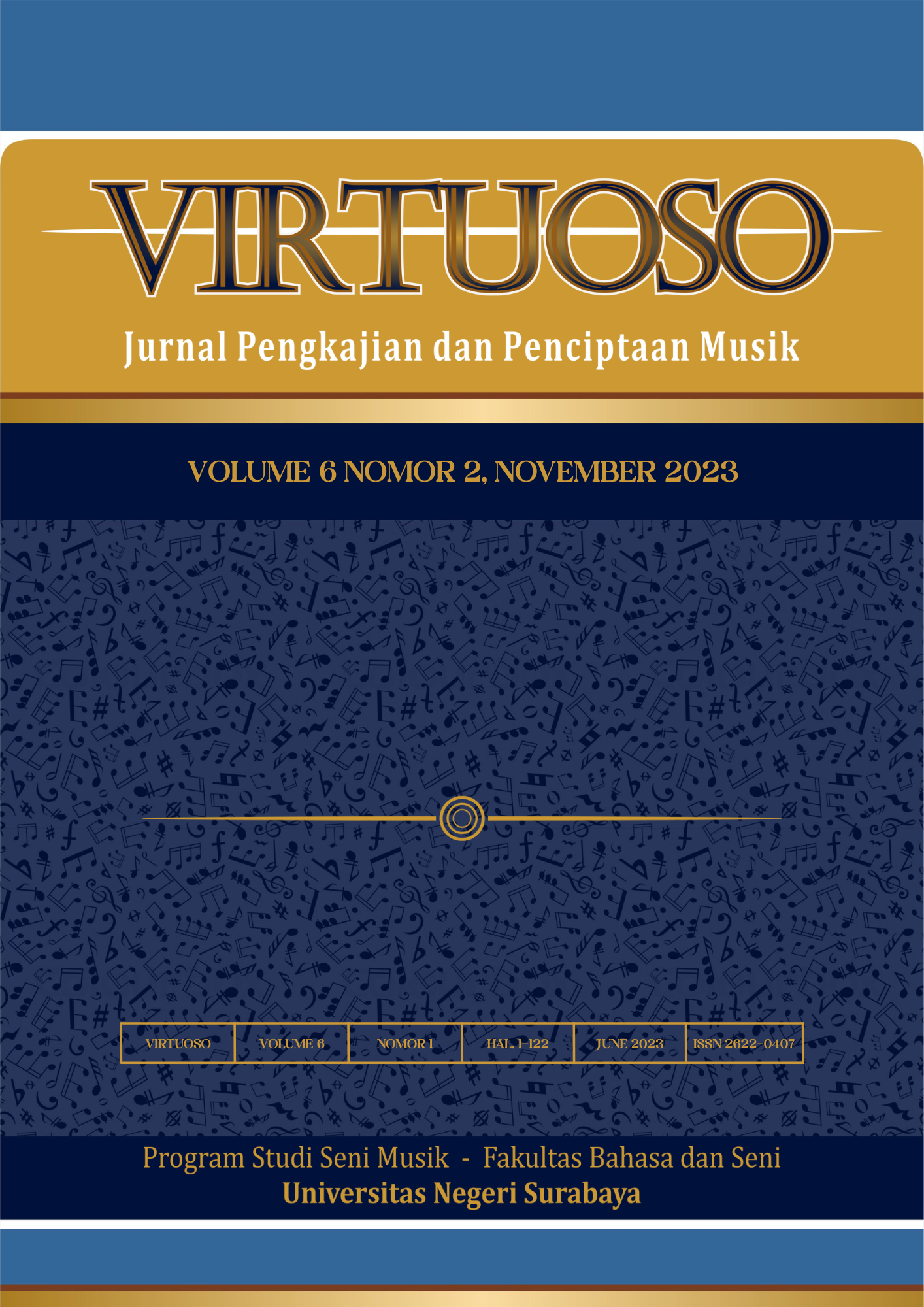Musical Analysis Structure and Violin Playing Technique in Suzuki Violin Book
Main Article Content
Abstract
This article aims to describe and provide an overview of the analysis of the musical structure and violin playing techniques contained in the works in Suzuki Violin Book Volume 1. The research contained in this article uses a qualitative method with a systematic content analysis approach, objectivity, and generalization. The works analyzed in this research are "Twinkle, Twinkle, Little Star", "Lightly Row", and "Song of the Wind". The results show that the three works are simple works that are appropriate as teaching materials for educators in teaching students who are just learning violin instruments. This is evidenced by violin playing that only uses the A string and E string with 1, 2, 3, and 0 (open string). The works are composed of intervals that make the melody movement dominated by stepping movements rather than jumping. In addition, the techniques that appear in these works are simple techniques such as up-bow, down-bow, tenuto, and staccato, and a little complicated for beginners is syncopation. So, the three works are the right works to learn for beginners.
Downloads
Article Details

This work is licensed under a Creative Commons Attribution-NonCommercial-ShareAlike 4.0 International License.
The copyright of the received article once accepted for publication shall be assigned to the journal as the publisher of the journal. The intended copyright includes the right to publish the article in various forms (including reprints). The journal maintains the publishing rights to the published articles.
References
Apel, W. (1969). Harvard Dictionary of Music, 2nd Revised and Enlarged Edition (Second Rev). Belknap Press: An Imprint of Harvard University Press.
Borgdorff, H. (2012). The Conflict of the Faculties. Perspectives on Artistic Research and Academia. Leiden University Press. https://doi.org/10.26530/OAPEN_595042
Destiana, E. (2016). Analisis Bentuk dan Struktur Lagu Stambul Baju Biru Karya Hardiman. PEDAGOGIA: Jurnal Pendidikan, 5(2), 209. https://doi.org/10.21070/pedagogia.v5i2.252
Hidayatullah, R. (2016). Dasar-dasar musik. Arttex. http://repository.lppm.unila.ac.id/id/eprint/39094%0Ahttp://repository.lppm.unila.ac.id/39094/1/aproval-DASAR-DASAR MUSIK.pdf
Hoffman, M. (1997). Syncopation. National Public Radio.
Kraemer, B. (2019). Common Time in Music Notation. Liveabout.Com. https://www.liveabout.com/common-time-2701532
Microsoft Academic. (2021). Dinamika (musik). In Wikipedia. Wikipedia Bahasa Indonesia.
Moleong, L. (2018). Metode Penelitian Kualitatif (38th ed.). PT Remaja Rosda Karya.
On Music Dictionary. (2016a). Down Bow. On Music Dictionary. https://dictionary.onmusic.org/terms/4801-down-bow
On Music Dictionary. (2016b). Up-Bow. On Music Dictionary. https://dictionary.onmusic.org/terms/3760-up-bow
Opie, Iona. (1997). The Oxford Dictionary of Nursery Rhymes (Peter. Opie, Ed.; 2nd ed.). Oxford University Press.
Randel, D. M. (1986). The New Harvard Dictionary of Music (Subsequent). Belknap Press.
Suzuki, S. (2007). Suzuki Violin School, Volume 1, Violin Part. (Revised). Alfred Publishing. https://doi.org/978-075-790-061-7

